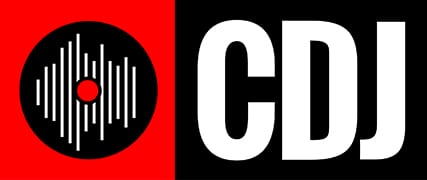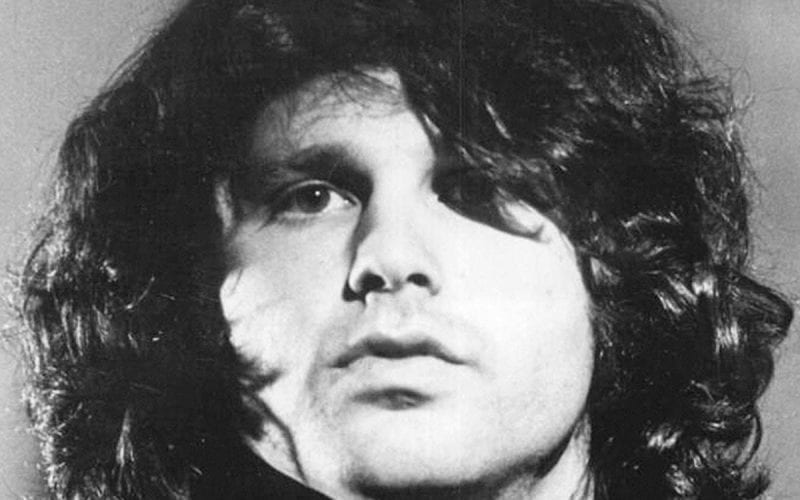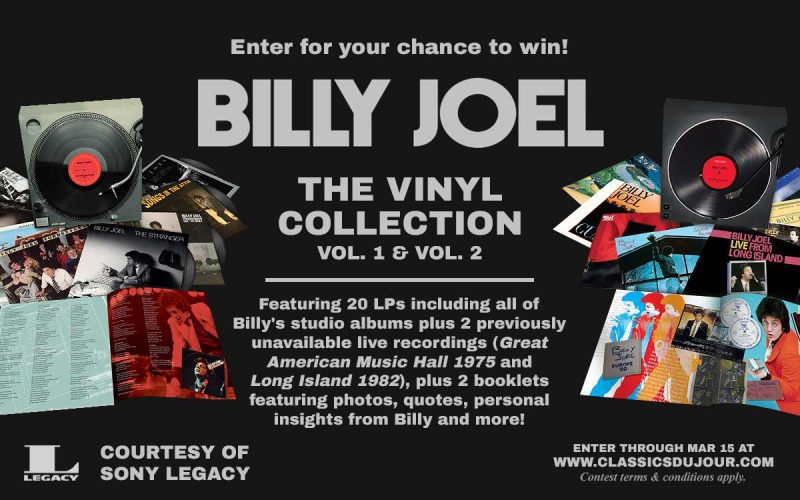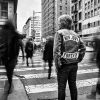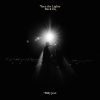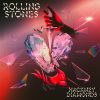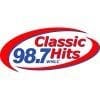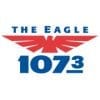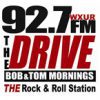 RAIDING THE ROCK VAULT – LAS VEGAS kicked off its one year engagement at the LVH–Las Vegas Hotel & Casino on March 9, 2013. This one-of-a-kind rock concert experience boasting the ultimate set list will be performing nightly (dark on Fridays and schedule subject to change) at 9pm in the LVH Theater.
RAIDING THE ROCK VAULT – LAS VEGAS kicked off its one year engagement at the LVH–Las Vegas Hotel & Casino on March 9, 2013. This one-of-a-kind rock concert experience boasting the ultimate set list will be performing nightly (dark on Fridays and schedule subject to change) at 9pm in the LVH Theater.
In this new, in-depth interview below, RAIDING THE ROCK VAULT’s Howard Leese [guitarist] and John Payne [Lead Vocals, Bass and producer of the show] discuss how the show was born, its evolution from premiering in Los Angeles last year (November) to kicking off a year-long engagement in Las Vegas and what fans can expect when they come to see this one-of-a-kind rock concert experience. View the sizzle reel for RAIDING THE ROCK VAULT – LAS VEGAS here.
Narrated, sung and acted along with compelling imagery including historical footage, RAIDING THE ROCK VAULT transports the audience back to a magical musical journey from 1948 to 1989, traversing the genre’s history chronologically through the ‘40s, ‘50s, ’60s, ’70s and ’80s. RAIDING THE ROCK VAULT features classic anthems from The Rolling Stones, The Who, The Doors, Led Zeppelin, Jimi Hendrix, The Eagles, Queen, Van Halen, AC/DC, Journey, Free, Bryan Adams, Supertramp, Toto, Deep Purple, and more, truly boasting “The Greatest Set List Ever.”
These timeless gems are translated on stage live and loud by an all-star band comprised of Howard Leese [Guitar] (Heart, Bad Company), Tracii Guns [Guitar] (LA Guns, Guns n’ Roses), Robin McAuley [Lead Vocals] (MSG, Survivor), John Payne [Lead Vocals and Bass] (Asia), Paul Shortino [Lead Vocals] (Rough Cutt, Quite Riot), Jay Schellen [Drums] (Badfinger, Asia), Andrew Freeman [Lead Vocals and Guitars] (Lynch Mob, The Offspring), and Michael T. Ross [Keyboards] (Lita Ford, Hardline). In addition, rotating special guests will be confirmed, kicking off with Bobby Kimball [Lead Vocals] (Toto), followed by Joe Lynn Turner [Lead Vocals] (Rainbow, Deep Purple) joining the show at the end of March.
RAIDING THE ROCK VAULT follows a compelling theatrical narrative told via narration by acclaimed actor Richard Malmos in front of the giant ROCK VAULT onstage. The music, performance, and visuals come together to tell this unforgettable tale.

Get an in-depth look into the vault here with Howard Leese and John Payne:
RAIDING THE ROCK VAULT – Q&A WITH HOWARD LEESE AND JOHN PAYNE
Q: When did this whole idea for Raiding The Rock Vault gestate? What sparked it for you?
John Payne: Well, “gestate” is the right word. It’s been a long pregnancy. Two years ago, I was approached by the ex-manager of The Yardbirds, Simon Napier-Bell. He used to manage Asia in the early days when I joined the band. He had an idea. He was sitting in a bar in Bombay. It actually sounds like a line from “The Land Down Under,” which it is [Laughs]. They had this really great cover band, playing all of these seventies and sixties hits. He thought it would be cool to get a super group together of guys and actually tour it with a big production. We’ve all seen it in the bars of L.A. It seemed like a reasonable idea. We took it to several people. Irving Azoff was one of them, and everybody seemed quite excited about it. It faded away when they found out there wasn’t enough money in touring it to put on the production we wanted. I got very disappointed. We got it going, and it fell flat on its face. I went away from it for a couple of months. I’d been doing this thing in the UK called “The War of the Worlds” with Jeff Wayne. It really is an incredible musical story, and it happens every year like The Trans-Siberian Orchestra. I thought, “Well, what if we change this? What if we make a chronological story of classic rock music and have an underlying theme going through it?” That completely changed the ballpark. After our Mayan Theater gig, we ended up here at the Las Vegas Hotel.
Q: It sounds like the thought process underwent quite a bit of evolution.
John Payne: It was a really great idea, but you’ve still got it happening in Los Angeles with Camp Freddy. I remember seeing “The Voices of Classic Rock” with my friend Glenn Hughes. They did great versions of songs they’d actually sung. We were doing something so different. We weren’t necessarily doing songs we’d been involved in. We’re a nice pedigree of musicians doing this wonderful set list. When you actually make it into the chronological story of rock ‘n’ roll, it starts in the future during 3012 when the earth gets hit by a meteorite. A select band of humans leaves the earth and comes back to find these capsules that are left, containing the history of our music. Along with this, we have socio-political things happening at the time. We have a 50-foot LCD screen, showing pictures from iconic photographers of all our classic bands, video and archive footage and kitch images of those eras . It goes through the roots of music from the late forties and kicks off with the band in 1963. For people who lived it, it’s a great trip down memory lane. For the kids who listen to the music of today, it’s a wonderful history lesson.
Q: What was your vision for this artistically? What message do you guys want to get across? What should people walk away with?
Howard Leese: For me, one of the most interesting aspects of the show John developed is it’s got the music of each era, but the production shows how that music affects society. It really did change how the world is today. We start in the sixties with some of the tempestuous times and the music of The Who, Jimi Hendrix, and The Doors. Some of these bands really changed the way people perceive and perform music. In turn, that changed society in a lot of ways. As you go through the decades and the music changes, you see how the world changes along with it. To me, that’s one of the things people take away. They’ll go, “Wow, I never realized this happened and how it really affected everyone!” It’s got some important social statements that are unique. Most of these kinds of productions are light. This has some gravitas to it, which I really like.
John Payne: I’m going to echo a lot of what Howard said. There’s a history lesson there for people to take away. These things really did change how the world was. Before this time, there was a very strict structure racial issues and class. They all blew up in the late fifties and early sixties. It shows how much that classic rock music took from the African American music in churches, jazz, and blues. It went across the Atlantic to England. Bands like The Who and The Rolling Stones brought that music back to America. England wasn’t really having the same racial issues. I’m reading Keith Richards’ book at the moment. When they were traveling through America at the time, they’d stop at these black clubs, and people would be astonished that there were white people there. It was from that British invasion that the world started to change. Racism and class issues were terribly changed by this movement of people. Thankfully, they changed the closeted world at this stage.
Q: This music also drums up many personal memories for both yourselves and the crowd.
John Payne: If I hear a song like “School’s Out,” I remember being in the car with my dad. His 8-track was on, and I’d be going to school. You remember smells and sights. They’re associated with these musical markers.
Howard Leese: When we were at the show at The Mayan, somebody told me, “When you played that one song, I was back at that time.” We try to transport the audience back in time to what it was like. Apparently, it was quite effective. It brought back a flood of memories for people. We’re playing a lot of songs so it’s a chance for people to hear their favorite song. A great song is a collective experience for so many. It travels all around the world, and almost everybody hears them. It’s a way of bringing people together. They have a common, shared experience. Even if it’s just a simple rock song, it means a lot to everybody around the world.
John Payne: Howard, Tracii, and I have all sat down and talked about this. None of us have played covers much before. Since the age of 14, I have always been in original bands writing my own songs. I never wanted to play any covers. Having that fresh approach for us has been really exciting. We’re playing these evergreen songs. The camaraderie and vibe in the band is incredible. It really is a band. We’re trying to remain as faithful as possible to these original masterpieces.
Q: How did you curate this “Ultimate Set List?”
John Payne: It wasn’t easy at all. It was different from The Mayan Theater where we did a test run of the show. We had about 15 songs there. We got all of these questions, “Why didn’t you do a Pink Floyd song? Why didn’t you do a Supertramp song? Why didn’t you do a Yes song? Why didn’t you do an AC/DC song? Why didn’t you do a Whitesnake song?” We’ve now doubled the number of songs we do by playing medleys as well. I researched the internet chronologically. I’d take 1963 and go, “What was the song that impacted people in that year?” It didn’t have to be the best-selling song; it’d had to be the iconic track of that time period. That helped me choose. Also, we pondered what the iconic groups were. It’s also an “Ultimate Set List” that will change. People can come see our show. Then, they can come back a month or a couple months later, and there will be different songs in there. There will also be a different guest. We have special guests every few weeks, and they actually sing their songs. It’s going to be a morphing thing.
Howard Leese: The set list chose itself. We were also looking for songs that would suit our style. We’ve tried a number of different ones. We’ve also added two medleys that are about seven songs apiece. We play just a section of each song. There are a lot of styles. An important song for an artist or a piece that really made a statement about the time will give the show more depth as far as the narrative goes.
John Payne: It’s a great conversation piece. One of Howard’s ideas was to have a little sheet of paper as attendees leave the concert and write their top three songs down that they’d like to hear from that period. Then, we can be led by what people really want. It’s such an incredible palette of material and a wealth of beautiful songs in a time period the world was changing. This thing will never happen the same way it did in the sixties and the seventies. What those songs did was amazing.
Howard Leese: We can continue to bring in new songs and change songs out. We’re never going to run out of amazing material to play. Like John said, every few months the song list is going to change. It changes when we have a different guest artist. The body of the show will change too. You can keep going back six months later and see quite a different bit of material.
John Payne: Our production designer is Paul Dexter. The look of the show is incredible. We start off in a Mayan jungle. There’s a forest on stage. This theater where Elvis Presley performed has an incredible lighting system. We doubled the number of lights and lasers in there. There’s a seventies set, and there’s an eighties set. I loved the set on the movie Rock Star with Mark Wahlberg. Paul did that set. There’s a fifteen-minute intermission. In addition to these socio-political things, there’s an underlying plot of four characters growing older. One of the guys goes to Vietnam. You see a lot of things happening like landing on the Moon. On stage left, we follow the history of what happened with music being played. In the sixties, we start off with the AM station KHJ. Then, it turns into KLOS in the seventies. When we reach the eighties, there’s a TV studio on the side. That’s a spin-off of MTV called RTRV TV. Those things are changing with the songs.
Q: Is it invigorating to share this rich history of rock ‘n’ roll?
Howard Leese: It’s fun for us. I lived through all of that. I grew up in L.A. listening to KHJ. I was on a KHJ television show as a teenager. I remember when they made KLOS. It made me remember the great music of the day.
John Payne: It’s a rock-u-mentary in a way, but it’s told in an exciting manner through these songs. I’ve always steered from a lot of theatrical stuff. Once I got the idea, I went to my good friend David Kershenbaum who used to be one of the main guys at A&M. He signed Janet Jackson and found Ryan Adams. He was also an incredible engineer and producer working with Duran Duran and Tracy Chapman. He’s got 75 gold and platinum albums. I got him involved as a co-creator, writer and diretcor. This journey is an exciting one. The acting side is a small part. Most of the show is about to playing the songs. This is 80 percent music and 20 percent theater. That fits in my world. It’s a rather interesting journey rather than a scholarly history lesson.
Q: Do you dig Las Vegas? How will you be spending your off time?
Howard Leese: Well, we’re working all day every day. There hasn’t been any off-time yet. We work quite hard so all we’ve really seen is the inside of the rehearsal studio and the hotel. Once the show is up on the boards and running, we’ll have some time during the day to look around. It’s going to be quite different. I live in Malibu, CA, and this is quite different from where I live. Once the show is going, there’s a lot of excitement around here, and I think it’s going to be fun.
John Payne: I’ve probably come here to work 20 times in the past few months. Not being a gambling person, I played here a lot with Asia. We played on Fremont Street last summer. For me, it’s always been a town to come to for a day or two and then leave. If I came here socially, by the second or third day of drinking with my pals, I’m done and I want to get back home to L.A. I’m finding there’s a lot more depth to this town than I first thought. There are a lot of great musicians here. There’s a lot more than just The Strip. This hotel being off The Strip is a great thing. I went on The Strip the other day. You hear the cacophony of the machines going and this bit of madness. This hotel is more old-fashioned Vegas. The history of the room is great. Elvis did something like 858 consecutive sold out concerts here. He played here more than he played anywhere else. It’s a beautiful venue, and I’m growing to like the town. I’ve been looking into the history of Las Vegas. Originally, it started originally because a lot of traveling people used it as an oasis in the 1800s. There was water here. That was why it was a stop-off. Some crazy person decided to build this monolithic city in the middle of nowhere. These huge structures are built on people’s losses [Laughs].
Q: What intrigues you about Las Vegas?
Howard Leese: I remember coming here with my parents as a young boy. They took me to a Tony Bennett show when I was seven- or eight-years-old. I looked at the guys in the band and thought, “That’s probably a really great job! He’s probably at the pool all day long drinking and hanging out with beautiful women and showgirls. Then, he comes in and does two hours with Tony Bennett. How hard could that be?” I’ve never done it though. I play here once in a while with Paul Rodgers—maybe once a year. I’ll reserve my judgment until a year from now [Laughs]. I’m going to enjoy doing the show, and the work is the number one thing I focus on. Beyond the excitement of The Strip, there’s great hiking and natural things you can do if you get out of town a bit. I’m looking forward to exploring that too.
John Payne: For me, it’s not the one-dimensional town I thought it was. I was born in the countryside of the UK, and I do like getting out. I’m going to enjoy that part of it. We’ve got a great stage set. Because you’re in the same place every night, you can tweak it so it sounds good for you. If you can make it your world, you’ll play better. There are great shows out here as well. The Tower of Power brass section jam in a bar here every week. Great artists come through here. I’ve gotten friendly with Carrot Top, and I went to see him the other night. He’s so funny and a really nice guy. It’s great because this music is our history. Las Vegas has been known as a Cabaret place, but it’s becoming more and more rock ‘n’ roll. Guns N’ Roses was here for a month. Def Leppard is coming out. Rod Stewart is here. It’s becoming more of a rock ‘n’ roll town. I think we’re ahead of the curve with this.
Howard Leese: Elton John is coming back. He’ll be here in a few weeks.
Q: Can you elaborate on the band’s chemistry? What’s the dynamic like having four vocalists?
Howard Leese: Having four lead singers obviously they’re going to fight over who sings what song. When they’re done scrapping, the last man standing gets to sing it [Laughs]. It’s a lot of fun for us. We’ve been going through these new songs in the medleys. Each guy sings it once. Then, we divide who has the best and most appropriate voice for the song. We have a strong band. Jay Schellen is a killer drummer. John and Jay have been playing together for a while in Asia. On the guitars, you have two Rock-and-Roll Hall-of-Famers: myself and Tracii Guns. It’s been really fun working with him. Michael T. Ross is on keyboards, and he plays with Lita Ford. You’ve heard “Hotel California” a thousand times. Until you sit down and learn how to play it, you don’t really know it. That’s a fun thing. There’s a lesson in every great song. When you learn to play a Jimi Hendrix song properly, you go, “Wow!” I think everybody enjoys putting these songs together and doing a faithful version while showing our own styles. It’s a strong band, and we can do anything with the amount of singers we have. It’s fun to suss it out and find out how we’re going to present each song. We developed our chemistry pretty quickly at The Mayan. You draw on people’s strengths. Tracii has a completely different style from me. He’s better on some things, and I’m better on others. We had to figure out who could do what. That chemistry has built a band identity and we’re working really hard. A band needs a style and identity to be effective. I’d say we play with balls. It’s the real thing. Doing this so quickly, we’re going to be ridiculously tight after a short period of time.
John Payne: I’ve worked with Jay for a long time. As a rhythm section, we’ve been together for years. There’s an unspoken communication there. Michael is the new one in there, but he’s a great musician. He complements the whole thing. The singers all get on great. I’ve known Robin McAuley for years. He’s a powerhouse. Paul Shortino has the smoky, bluesy voice. Our secret weapon is Andrew Freeman. He sings his ass off. His range is incredible, and he brings something special to the show. There’s incredible pedigree and camaraderie. It’s also clicking, and we’re having great fun doing it.
~~~
Ticket prices for RAIDING THE ROCK VAULT range from $49 to a special Rock Star Package for $100 (which includes tickets in first five rows, t-shirt, signed concert program, signed album, meet and greet and VIP pass) plus fees. Tickets can be purchased by visiting the LVH box office or by logging onto thelvh.com, vegas.com, or ticketmaster.com. Tickets can also be purchased by calling 702-732-5755 or 1-800-222-5361.
For more information, check out:
www.raidingtherockvault.com
